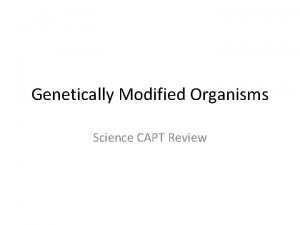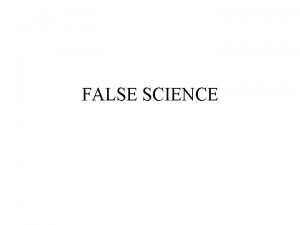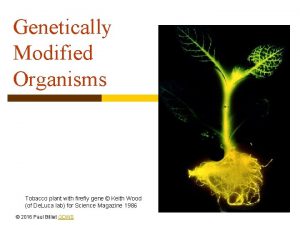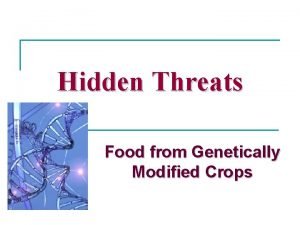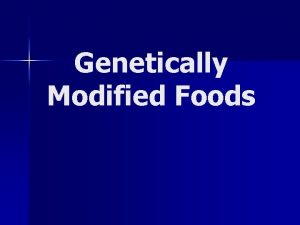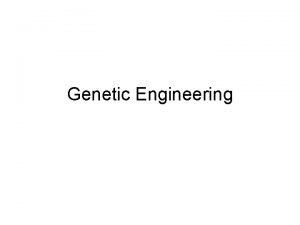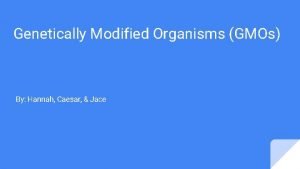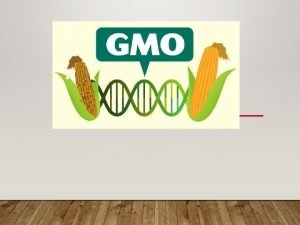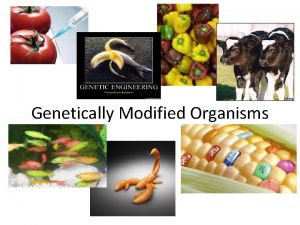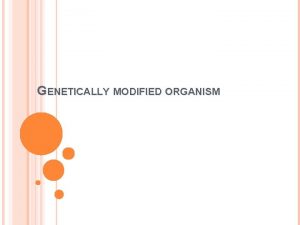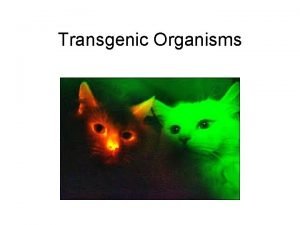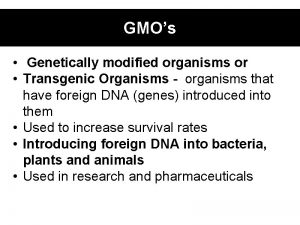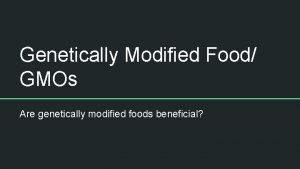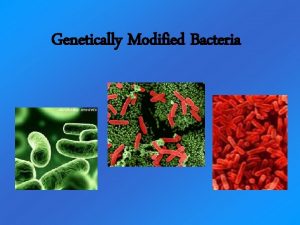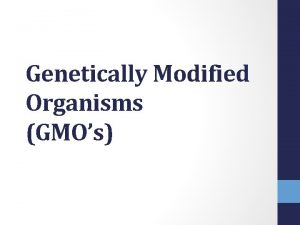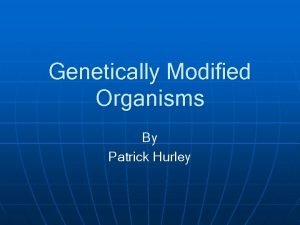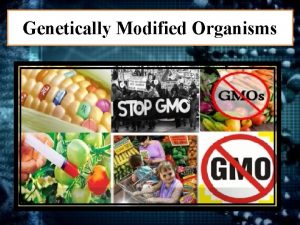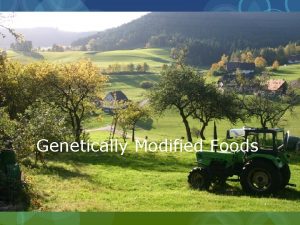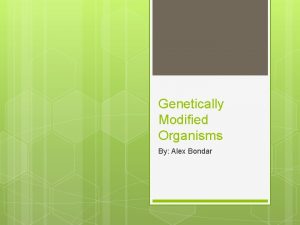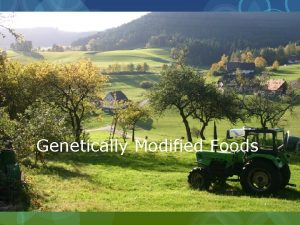Genetically Modified Organisms GMOs GMOs Technologies that alter















- Slides: 15

Genetically Modified Organisms GMOs

GMOs • Technologies that alter the genetic make-up of living organisms such as animals, plants and bacteria. • Altering the DNA code in a cell that is being artificially grown in a lab.

GMOs • Basically making a new cell with new characteristics

How? 3 ways • 1) -Take DNA from one organism • - Modify it in the lab • -Insert it into the target organism • New and useful traits are produced • (ex vaccines)

How it really works (an example using insulin) 1. The gene which is produces insulin in humans is identified and isolated 2. A bacteria which is easy to grow is selected (E. coli) 3. The gene is inserted into the genome of the bacteria 4. The bacteria is cultured 5. Insulin produced by the bacteria is extracted and purified 6. Insulin is injected into an organism

How? 3 ways • 2) Increase or decrease the # of copies of genes already present in the organism

How? 3 ways • 3) Silencing, removing or changing the position of a gene within the target organism.

When? • 1) 1973 – bacteria that had an amphibian gene • 2) 1978 - bacteria able to produce insulin (became available to population in 1983) • 3) Human growth hormone • 4) Blood clotting factor • 5) Insect resistant soybeans, corn, cotton and alfalfa • 6) Rice with extra iron and vitamins in Asia

Why Bacteria? • 1) Unicellular • 2) No nucleus • 3) Duplicate quickly

Why? Positives • Make more food for countries with less food (not happening) • Better taste and quality • Increase rate at which organism grows (fish) • Improved resistance to disease (Mad Cow) • Better biodegradable substances • Less need for herbicides and insecticides • Conservation of soil, water and energy • Medicine

Why Not? Negatives • Allergens (nuts, sulfates, dairy) being transferred to the target organism • Exploit natural resources • Developing countries are still dependent of industrialized nations • Mixing genes among species (insulin) • Labeling is not mandatory • Making money is main concern before safety (ethical issue)

Near Future • • Bananas that protect against Hepatitis B Fish that mature more quickly Cows resistant to Mad Cow Fruit and nut trees that you can harvest earlier • Plants that produce new plastics

Present Use • • • US: 53% Argentina: 17% Brazil: 15% Canada: 11% Africa: 1%


 Genetically modified organisms
Genetically modified organisms Genetically modified organisms
Genetically modified organisms Genetically modified crops
Genetically modified crops Pleiotrophy
Pleiotrophy Gm foods advantages and disadvantages
Gm foods advantages and disadvantages Firefly gene in tobacco plant
Firefly gene in tobacco plant Genetically modified crops have
Genetically modified crops have Genetically modified food
Genetically modified food Rdna technology applications
Rdna technology applications Hannah caesar
Hannah caesar Gmos
Gmos Why do organisms interact with other organisms
Why do organisms interact with other organisms Unicellular multicellular
Unicellular multicellular Walmart thất bại ở nhật
Walmart thất bại ở nhật Gây tê cơ vuông thắt lưng
Gây tê cơ vuông thắt lưng Phân độ lown
Phân độ lown
